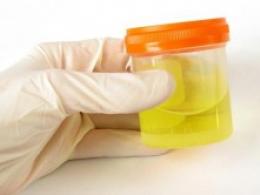How to properly distribute laundry in the washing machine. Loading the washing machine: basic rules. How to wash clothes from different fabrics
Regular washing of bed linen guarantees not only the cleanliness of the bedroom, but also a sound sleep. What could be easier if you have a washing machine? Pressing a button - and here is your kit, later a short time shines clean and smells fresh. We will tell you how to wash bed linen in a washing machine so that it does not shed, does not lose its bright color, does not tear or deteriorate.
Training
Washing bed linen does not begin with loading the washing machine into the drum, but with sorting. Often several sets are washed at the same time. For example, a children's and an adult set. So, before we talk about how to properly wash bedding, we will prepare it:
- Wash colors separately without adding any other clothes to the drum. Neglecting this rule, you will get a faded, faded thing.
- When washing the newborn set, do not add anything else to the SMA, otherwise the baby will have skin irritation.
- Do not put more than allowed in the drum. Do not forget that the automatic washing machine has weight restrictions. If you decide to immediately wash more things than expected, the washer simply will not start. For example, a set with a pair of pillowcases weighs at least two kilos.
- Turn items inside out before loading.
- Another tip on how to wash bedding: try to leave free space in the drum.
- Flax, light calico, percale, ranforce, poplin and satin are erased in any mode.
- Colored chintz, bamboo, cambric, polyester and cotton require the "Delicate wash" mode.
- Silk - Silk mode.
Important! Some silk items may only be dry-cleaned, so read the label before washing.

Before washing machines began to appear in the house of every housewife, things were washed in hot water, often even boiled. This was followed by disinfection. Today there is no need to spend so much time and effort. A washing machine will easily complete the task if you know at what temperature you need to wash bedding and what means to use for this. How to wash bedding made of light cotton or linen? Optimal at 60 degrees - this program will be enough for high-quality and efficient washing. For better disinfection, do not be afraid to set higher temperatures. But you should know that in this case the thing will wear out faster.
At what temperature should you wash bedding with bright colors? Set the temperature to 30-50 degrees. When washing, use products designed specifically for colored fabrics. For example, liquid shampoos are perfect. If it is covered in small spots, pre-soak it for a few hours or run it in the washer on the prewash cycle.  The temperature of washing the bed linen on which your child sleeps can be 60-90 degrees. You have learned how many degrees to wash bedding so as not to damage the fabric and not deprive it of its attractiveness. You can also tell your relatives and friends about washing powders and conditioners - it will come in handy for them. We offer an interesting video
The temperature of washing the bed linen on which your child sleeps can be 60-90 degrees. You have learned how many degrees to wash bedding so as not to damage the fabric and not deprive it of its attractiveness. You can also tell your relatives and friends about washing powders and conditioners - it will come in handy for them. We offer an interesting video
The most common arebeko washing machines , in which from 1.5 to 6 kg of linen can be washed at the same time.Optimal loading weight washing machine depends on the manufacturer's recommendations and volumes
We bring to your attention several simple tips on the correct loading of the washing machine, which will help ensure high quality washing, avoid premature breakdown and extend the life of the household appliance.
.jpg)
1. Traditionally, the weight of dry cotton items is taken into account. Note that the fibers different types fabrics absorb different amounts of moisture when wet.
2. Load a full drum with cotton items, but do not pack them down. Load half the drum with synthetics, and only a third with wool.
3. Constant overload will shorten the life and may lead to premature failure. Overloading the machine results in poor washing results and is accompanied by strong vibrations and knocking.
4. The underload of the unit is idle consumption of resources, which leads to wear and tear of equipment. Many are wondering what is the minimum amount of things you can download. As a rule, in the description of technical characteristics, a figure of 1-1.5 kg is indicated. dry laundry.
.jpg)
5. It is advisable to sort the laundry and load large items with small ones. This is due to the fact that large things are not evenly distributed over the drum and this leads to vibration. Small items help better distribution of laundry. Vibration is reduced, the load on the washing unit (bearings) is reduced, and the service life is extended.
6. Laundry should be loaded into the machine flat and not stacked.
7. It is advisable to load small, delicate things in special nets. This is done in order, firstly, not to spoil things, and secondly, to avoid or greatly reduce the likelihood of small things getting between the tank and the drum.
8. Be sure to check the pockets for coins, parts of children's designers, toothpicks, money, hairpins, pencils, wrappers, etc. before loading the laundry.
In order for the washing machine to last as long as possible, be sure to follow all the recommendations of the manufacturer. Loading things into the washing machine must be correct without overloading or underloading.
Prepared by Maryana Chornovil
Well ... Get your slippers ready!
1) The rate of laundry during washing depends on the type of machine ... If the instructions say "5 kg", I lay it around (fortunately, there are scales in the house!), And now even without weighing I am guided - what and how much ..
2) Buttoned zippers and loose buttons, of course, are relevant ... However, there are still rivets, "tails" from the "dogs" of lightning - and you never know what other metal parts that can damage the drum (and not only!) Machines ... Practical advice "burned out" on this lady: girls, don't be stingy! Buy a normal laundry net (not just for underwear!), bigger and more spacious, and wash all problematic things only in it!
3) Regarding the sorting of laundry ... If you put all the small things in a slide on top, then when the machine is loaded horizontally, they will fly all over the machine, and half will "settle" in the space between the door and the sealing cuff ... Naturally, since things (the same socks!) will sit tightly in the aforementioned space, they will not be washed at all ... I alternate things when loading the machine, i.e. I put "little things" between large things ...
4) Pockets - yes! This is sacred...
5) Jeans, things with applications, printed patterns (paint), sequins, beads, rhinestones should be turned inside out ... In all other cases, this is not so important ...
6) and 7) White - with powders "for white", color - only powders "color"! It's like an axiom ... "Extra" powder now, in a crisis, hardly anyone will put ... Most modern machines have an "eco" mode, when, with underloading of laundry, you can set a smaller amount of water for washing (and reduce the amount of powder!), and accordingly, either increase the amount of water for rinsing, or rinse one more time, additionally ...
Spinning - almost without question! The only thing I would like to note is that it is better to slightly “under-squeeze” the linen (and thereby reduce the number of “pressed” folds!), Than to iron it courageously later ...
9) The most controversial point ... I do not use "calgon" (and other "softeners" of water), because it is caustic soda in pure form, in a beautiful package and at a crazy price ... Yes, they "soften" the water, preventing the formation of scale, but just as effectively "coffin" the machine itself ... As for citric acid- yes, it will clean the heating elements and is safe for the metal parts of the machine, but it completely destroys all rubber ones ...
In conclusion ... I did not want to offend the author, but I have had an imported washing machine for the second decade ... I have come across a lot of what is written in the article, and I allowed myself to express an opinion from personal practice ...
If you do not know how to properly fold laundry in the machine, you can make a lot of trouble. In the best case, the washing machine will slow down at the very beginning of the cycle, and in the worst case, it will not finish washing at the spinning stage and will give a corresponding error. All this will happen if too few things are loaded into the drum, or vice versa, if the machine is given an unbearable load. But it’s better not to experiment, but to study in advance the rules for laying the drum of a washing machine.
Cooking things
Proper drum stowage begins with storing, inspecting and sorting dirty items. Not everyone knows that it is possible to store soiled and stale clothes only in containers with ventilation holes, to prevent them from getting wet and stored for a long time. If you neglect the listed rules, mold, an unpleasant smell will appear, and it will be difficult to remove stubborn and old stains. But you can’t take dirty things out of the basket and immediately send them to the tank. Don't forget the following steps.

Checking pockets and folds should be a mandatory step. Sharp, hard, heavy and small objects, keys or coins, if they enter the drum and tank, will cause mechanical damage, wedge the shaft or clog the drain system. Therefore, zippers and buttons are always fastened, and underwear, scarves and children's socks are placed in special mesh bags.
How many things to load?
When things are sorted, you can start loading them. But you should not rush - you need to remember exactly what is the maximum allowable weight of dry laundry for a particular model. It is indicated on the body of the machine or is prescribed in technical passport washers.
It should be understood that the indicated 6 or 4 kg is the weight of cotton items. Other types of fabric may be somewhat heavier or bulkier. For example, a woolen shawl becomes heavier when wet than a cotton suit of the same dry weight. Also with volume: 1 kg of organza or veil will take up more space than 1 kg of rough work clothes.
The machine will detect overload or underload during spinning, and if the deviation from the norm is too large, it will stop working for safety reasons.
 Therefore, manufacturers recommend not to waste time and effort on constant weighing, but to focus on the fullness of the drum. The maximum load assumes a full tank without tamping, so it is enough to load things into the machine, leaving a small space as a reserve. An exception will be synthetic and woolen fabrics, which should occupy no more than ½ of the drum in the first case and 1/3 in the second. There is another option - to weigh the linen and calculate 10 liters of water for each kilogram.
Therefore, manufacturers recommend not to waste time and effort on constant weighing, but to focus on the fullness of the drum. The maximum load assumes a full tank without tamping, so it is enough to load things into the machine, leaving a small space as a reserve. An exception will be synthetic and woolen fabrics, which should occupy no more than ½ of the drum in the first case and 1/3 in the second. There is another option - to weigh the linen and calculate 10 liters of water for each kilogram.
If you do not control the weight of the loaded things, then the hostess will not be happy with the consequences. Overloading is fraught with internal mechanical damage due to a drum that is too heavy, and incomplete loading will lead to powerful vibrations, microcracks and imbalance. True, many modern models provide for the possibility of washing at half load, but most budget washers have a strict limitation - at least 1-1.5 kg of dry laundry.
Calculate the loading rate
We repeat that each washing machine has its own loading rate, and the maximum weight must be indicated in the accompanying documentation when buying a model in a store. The maximum value depends on the design, dimensions and type of machine. So, the units as standard have the following capacity:
- compact or portable (most often desktop) - from 1.5 to 3 kg of dry things in one cycle;
- narrow machines with a depth of up to 80 cm - 3-6 kg of laundry;
- full-size with a depth of 85-90 cm are designed for simultaneous washing from 5 to 10 kg.
The larger the capacity of the machine, the more expensive its maintenance.
Most often, buyers choose "universal" capacity machines with a maximum load weight of 5-7 kg. This run-up allows you not to store laundry for a long time and to cope with the accumulated things in a couple of cycles. Knowing exactly the capacity of your machine, you can approximately calculate the weight of things ready for loading. A list of the average mass of fabric products popular in everyday life will help in this:
- three-piece bedding set - 1.4 kg (sheet - 500 g, duvet cover - 700 g, pillowcase - no more than 200 g);
- bath towel - 700-800 g;
- waffle towel - about 150 g;
- tablecloth 2 * 2 m - about 500 g;
- men's shirt - 350 g;
- women's blouse - 70-100 g;
- children's T-shirt - 100 g;
- socks 1 pair - 50-60 g;
- jeans - 600-700 g;
- handkerchief - about 20 g;
- flannelette blanket or plaid - over 1 kg.
By simple mathematical calculations, you can scatter the accumulated laundry for several washes that are safe in terms of weight. If a mistake was made, the machine will report a shortage / bust by hanging or suddenly stopping the program in the middle of the cycle. To eliminate the imbalance that has arisen, you will need to turn off the machine, wait until the hatch door is unlocked, open the drum and straighten the crumpled linen, taking out some of the things out or reporting them if there is a shortage. Next, close the door tightly and start the mode from the very beginning.
Before loading things into the washing machine, it is worth evaluating their weight and the capabilities of your machine. Then the washing will be completed on time and will not bring unnecessary trouble.
What do you need to wash clothes? Water, yes washing powder - any hostess will say. But the water must be warm, otherwise the dirt cannot be removed from the laundry. And if you just put the laundry in warm water with powder, there will be no result either: you need to rub the laundry with your hands. And the result cannot be achieved instantly either - you need to rub and wash off the dirt with water, and rub again. Water, chemistry, temperature, mechanics and time - these are the main washing factors that continuously interact with each other, replacing each other in a vicious circle.
What for what
Water:
Moisturizes the fabric;
Dissolves washing powder;
Blurs and removes dirt;
Conducts heat.
Chemistry (washing powder):
Reduces the surface tension of water;
Serves as a binding agent for hardness components in water softening;
Is a solvent for contaminants;
It has a bleaching effect on the fabric.
Mechanical impact:
Provides interaction of linen, washing powder and water;
Serves for removal of water from linen after washing (extraction).
Temperature:
Enhances the effect of the individual components of the washing powder;
Reduces the time of chemical reactions.
Time:
It is necessary for sufficient interaction between water, washing powder and linen.
The washing machine contains all the factors necessary for washing. Moreover, the action of many of them is greatly enhanced compared to hand washing. It is enough to name the spin: is it possible, by squeezing the laundry with your hands, to remove moisture from it in the same way as it happens when the drum rotates at a speed of over 1000 rpm?
How to deal with dirt
It is estimated that 100 kg of moderately soiled linen contains from 2 to 4 kg of contaminants of various composition and origin. There are two main types of pollution:
Soluble in water (salt, urea, sweat, easily soluble oils, etc.);
Insoluble in water (fat, sand, dust, pigments, graphite, etc.).
Soluble contaminants can be washed off with either plain water or a detergent solution. A number of contaminants can only be removed by special treatment (dry cleaning). These are stains from paints, varnishes, glues, pigments. Other contaminants can only be overcome by the use of bleaches. These include dark spots, which are not removed at all during washing or are only partially removed. The bleaching process causes the pigments to be destroyed by oxidation, making them invisible. Such stains include stains from spinach, tomatoes, carrots, wine, cognac, beer, tea, coffee, etc.
Finally, large group pollution is removed only with the help of enzymes - biocatalysts, which effectively dissolve protein pollution at temperatures below 50°C. These components of laundry detergents have the ability to separate long chains of protein chemical structures into individual components, which are then removed by water. Contaminants that are removed by enzymes include eggs, blood, cocoa, food starch, etc.
Each fabric according to the program
When starting a machine wash, the user must set a specific program corresponding to the type of laundry (cotton, dyed fabrics, wool, etc.) and the degree of soiling. The program of the machine is a time sequence of performing those mechanical, chemical and thermal effects that are necessary in order to remove dirt from the laundry placed in the drum.
The first stage of the program is the actual washing. Water enters the laundry placed in the drum, washing off the washing powder from the hopper along the way (chemical exposure begins). Water is heated to a predetermined temperature (thermal effect), and the drum rotates at a low speed in one direction or the other, so that the linen lying in it is continuously shoveled and plopped down, rising up on the drum lining (mechanical effect). And this whole process lasts for a certain time, so that each of the types of influences works with maximum efficiency.
After the end of the wash, the water is drained from the tub and the rinsing phase begins. It consists of several successive fillings of the tank with water, rotation of the drum and draining the water. The task of this stage is to remove the remnants of washing powder from the laundry, and at the same time the remaining contaminants. Heating of water at this stage does not occur.
Finally, the last stage of the machine's operation according to the program is the spin cycle. The drum rotates at high speed, the linen is tightly pressed against the perforated walls of the drum by centrifugal forces, and the water escapes through the perforation holes.
The above description of the machine program is very simplified. The program can include a number of additional actions: for example, if the laundry is very soiled, a prewash can be performed before the main wash, shorter and with less water heating. Conversely, it is possible to exclude certain steps from the program: if wrinkling of the laundry is undesirable, you can cancel the spin cycle and end the machine by draining the water from the tub after the final rinse. This feature is called Spin Cancel or Rinse Hold.
Here is the minimum set of basic programs available in modern washing machines:
During each of these programs, thanks to the "auto-weighing" function, the washing machine automatically adjusts the duration of the wash cycle, the amount of water for each rinse, the required number of rinses, and the duration of the high-speed final spin depending on the weight of the loaded laundry.
In addition to the listed basic programs, many manufacturers develop their own original programs for the operation of the washing machine. For example, Electrolux has created a "soak" program that successfully removes many of the contaminants that today's washing machines cannot always handle.
Here is just one example: a child returned from a pioneer camp. Among his belongings were the trousers in which he fell into the mud a week ago. How to remove something like this? Any housewife will say - of course, for starters, soak in a powder solution for several hours. However, the solution that most washing machines offer today is to add a “prewash” to the regular program, which lasts 15-20 minutes, and this time cannot be increased. In practice, everyone knows that after less than 2-3 hours of soaking, such pollution cannot be washed off. So how to be? Really soak in a basin, and then transfer to the washing machine?
Electrolux offers a special intensive program for this task. The washing machine will not only soak the laundry in warm water for several hours, but will also stir it every 40 seconds. One other manufacturer of washing machines does not have a similar opportunity.
The soaking program works as follows. During the first 20 minutes, the laundry is washed at 30°C. After that, the heating is turned off and every 40 seconds the drum is scrolled, stirring the laundry. The carborane tank retains heat for a long time, so for many hours the temperature does not drop to room temperature, providing excellent washing quality.
Soaking can last up to 18 hours in front-loading machines and up to 24 hours in top-loading machines, after which you can simply drain the water, wring out the laundry, or run any washing program.
Everyone who has ever tried to wash using the “soak” program notes the amazing quality of washing. Someone got rid of pre-washing the white collars of men's shirts, someone loves perfectly white bed linen, and someone is glad that children's things, on which extremely persistent stains of “unknown” origin appear, are ideally washed without any extra effort. One client called the Electrolux information line and said that the soak program has completely changed her attitude towards machine washing. “Now I put any laundry in the washing machine in the morning, including the soak program, and when I get home from work I start the main wash. Surprisingly, even the most persistent stains disappear! I just love my washing machine for it, honestly…”
A certain peculiarity of the terminology should be noted. The concept of "soaking" is found in the descriptions of the programs of operation of washing machines from various manufacturers. At the same time, soaking laundry in the truest sense of the word is not done so often. So far, the record was the soak cycle in ASKO washing machines (2 hours). In Electrolux washing machines, the soak lasts longer and allows you to wash what is almost impossible to wash.
By fabric and spin
As the reader has already noticed on the characteristics of washing programs, each type of fabric has its own maximum allowable rotation speed of the drum during the spin cycle. If for durable cotton fabrics there are no restrictions on this indicator, then high-speed spinning is contraindicated for delicate fibers. However, modern machines usually have a “foolproof”: the electronic control system will not allow the user to set the spin at 1000 rpm if the wool wash program is set.
The characteristic speeds of rotation of the drum during the spin cycle of linen are shown in fig. 6:
White and colored cottons are not afraid of spinning at the highest speeds (1600 rpm and even higher). After such an intensive spin, the laundry dries very quickly;
For whites and coloreds to be dried in a tumble dryer, spinning at 1200 rpm is sufficient;
Drum rotation speed of 800-900 rpm is ideal for products made of synthetic fibers. Linen is well dehydrated, but the fabric is not damaged;
The rotation speed of 600 rpm is used for gentle spinning of wool, silk, etc.
Before washing
Perhaps some of the readers of the recommendations below will seem elementary truths. But the statistics of requests from owners of washing machines to service departments suggests that not all of them follow the basic rules of machine washing.
Things prepared for washing must be sorted, separating heavily soiled linen from not very dirty, and colored from white. Do not wash whites and coloreds together, as colored items may shed and stain whites. If your clothes are heavily soiled, use the Prewash programme.
Remember that linen should not be stale in anticipation of washing, otherwise it will not wash well. For good ventilation, it is better to store it in wicker baskets or drawers with ventilation holes before washing. Laundry must be stored in a dry state and in a dry place, otherwise damp spots and mold will form on it. Before washing, duvet covers and pillowcases are turned inside out, and lint is shaken out of their corners.
Durable fabrics and delicate fabrics also separate from each other because they use different wash programmes. Immediately before washing, pockets are checked in things so that their contents (nails, nuts, chewing gum, sweets forgotten by children) do not spoil clothes and do not damage parts and mechanisms of the machine. For the same purpose, metal buckles, accessories, fasteners, chains and other metal trifles are subject to seizure. Zippers, buttons and buttons on things must be fastened.
Small items such as handkerchiefs are best placed in a special bag for washing in the machine, and their clothes terry cloth or jersey turn inside out with a terry surface. Socks and stockings should also be turned inside out.
The machine must not be overloaded beyond the established norm. The maximum load refers to the weight of cotton items. It is not necessary to weigh the laundry before each wash - it is enough to remember that a full load for coarse laundry is a completely filled, but not packed drum. The maximum load when washing synthetics is a half-filled drum, and when washing wool, a drum filled by a third. An approximate calculation of the mass of things is given in the table:
Approximate calculation of the mass of things
| Product | Weight, g |
| Duvet cover | 600-700 |
| Sheet | 400-500 |
| Pillowcase | 200 |
| Terry towel | 500-700 |
| Kitchen towel | 100-200 |
| Napkin | 100 |
| Tablecloth | 250-600 |
| Apron | 150-250 |
| Men's shirt | 200-300 |
| Men's pajamas | 400-500 |
| Men's underwear | 100-150 |
| Socks | 60 |
| Children's shirt | 200 |
| Womens Blouse | 100 |
| Skirt | 300 |
| Evening Dress | 200 |
| Nightgown | 300 |
| Robe | 400-500 |
| Stockings | 50 |
| Handkerchief | 25 |
| Jeans | 800 |
| flannelette blanket | 1300 |
Choice of detergents
Choose a powder according to the type of fabric and type of soiling. The main constituents of laundry detergent are usually listed on the packaging (eg bleach, enzymes, etc.).
Do not use detergents intended for hand washing - the resulting excessive foam impairs the washing result and may damage the washing machine. Automatic washing machines are designed to use low foam detergents. These powders often have the word "matic" in their name, and the packaging shows either a front-loading machine or a loading hatch.
Exceeding a reasonable dosage also causes increased foaming even when using special washing powders. This may damage the machine.
When using the powder for the first time, even if it says that it is intended for automatic washing machines, we advise you to make sure that the level of foam during washing is not higher than the top edge of the hatch (in front-loading machines). Otherwise, refuse to use the powder of this brand in the future. Reduce the amount of detergent when the machine is not fully loaded. Liquid detergents are used for washing at temperatures not exceeding 60°C. Using them eliminates the use of a prewash cycle, so the amount of detergent recommended on the package refers directly to the main wash cycle. When washing cold, always reduce the amount of detergent: cold water it dissolves worse than hot, and part of it will be wasted.
Soak
Although automatic washing machines with a soak function (for example, Electrolux machines) have already begun to appear on the market, owners of machines that do not have this function still have to use such a traditional washing tool as a conventional manual soak. Pre-soaking laundry plays a very important role in removing most stains. Modern powders, such as Ariel Automat, contain a bleaching and color refreshing agent to help keep whites white and bright colored clothes, and sodium perborate to remove fruit juice, tea, coffee, and wine stains.
How long should laundry be soaked? It is best to soak the laundry for half an hour, then drain the water, wring out the laundry and soak it again for half an hour. Two soaks are incomparably more effective than one, even if it is hourly. Long-term soaking sometimes leads to quite the opposite result. When a garment sits in stale water for too long, the dirt re-enters the structure of the fabric. There is a well-known effect of a washed thing, known to almost all housewives. In this case, the fabric, as a rule, also discolors.
Soaking is most effective at a temperature of 40-50°C. Here are some nuances to keep in mind when soaking laundry:
Always pay attention to the labeling of linen. Never soak things if they are only dry-cleaned;
Never soak silk, wool, leather, metal-trimmed items, or any other similar items;
Use a sufficiently large container for soaking, for example, a sink or a plastic bowl (only not enameled), so that things fit freely in it;
Use warm water (40°C) for soaking organic stains and medium temperature water (50°C) for other soaks;
Make sure the laundry detergent is completely dissolved in the water before soaking things.
After soaking, just before washing, rinse things as usual.






